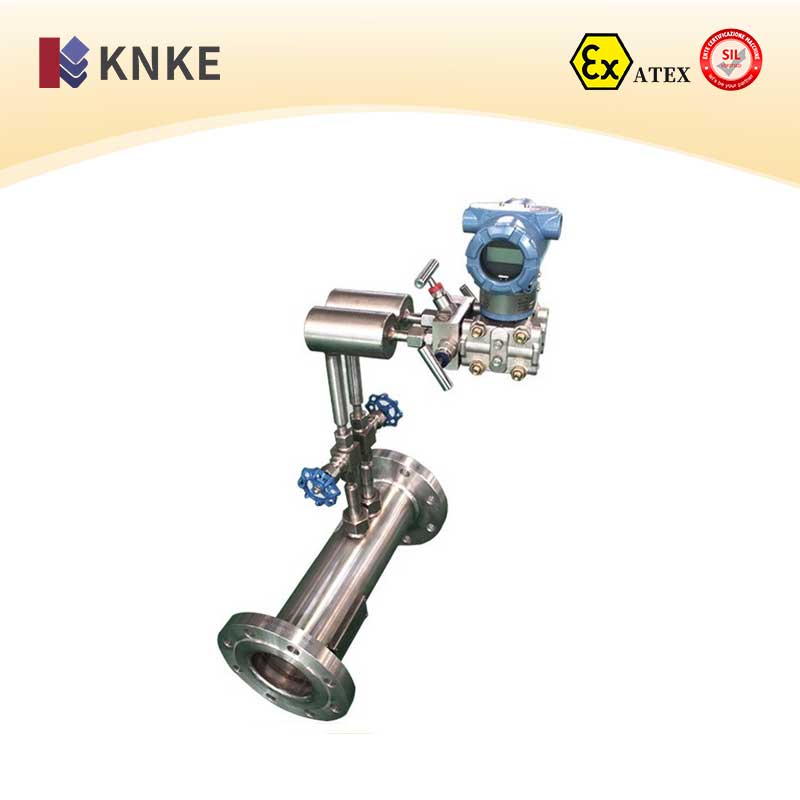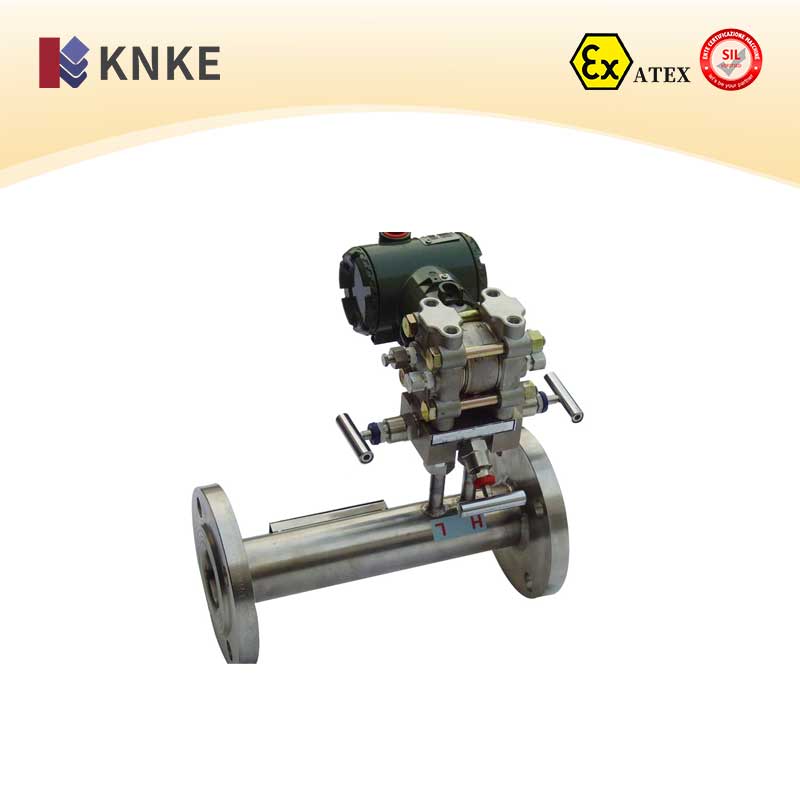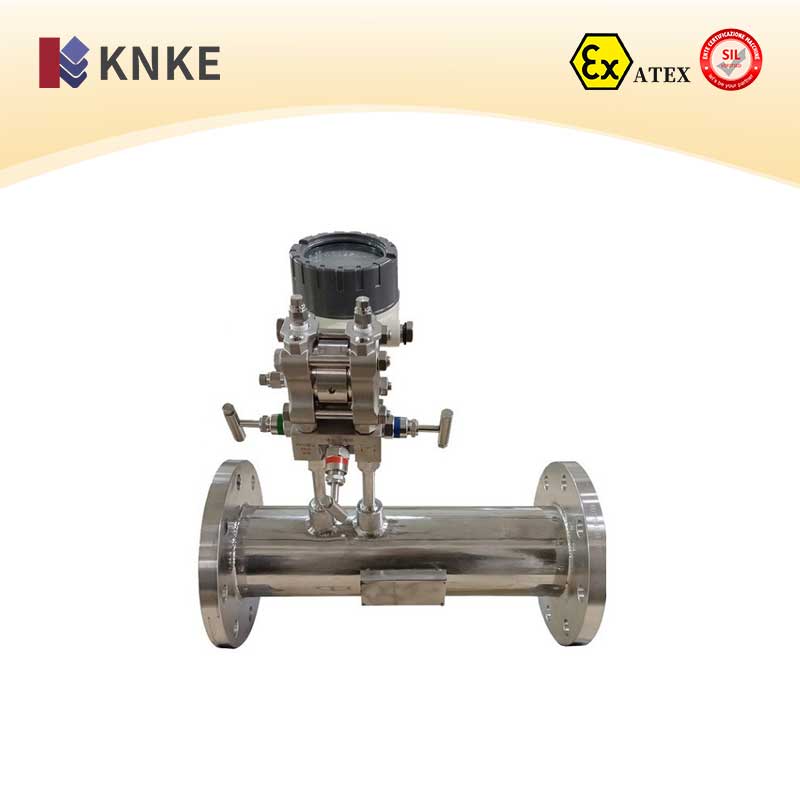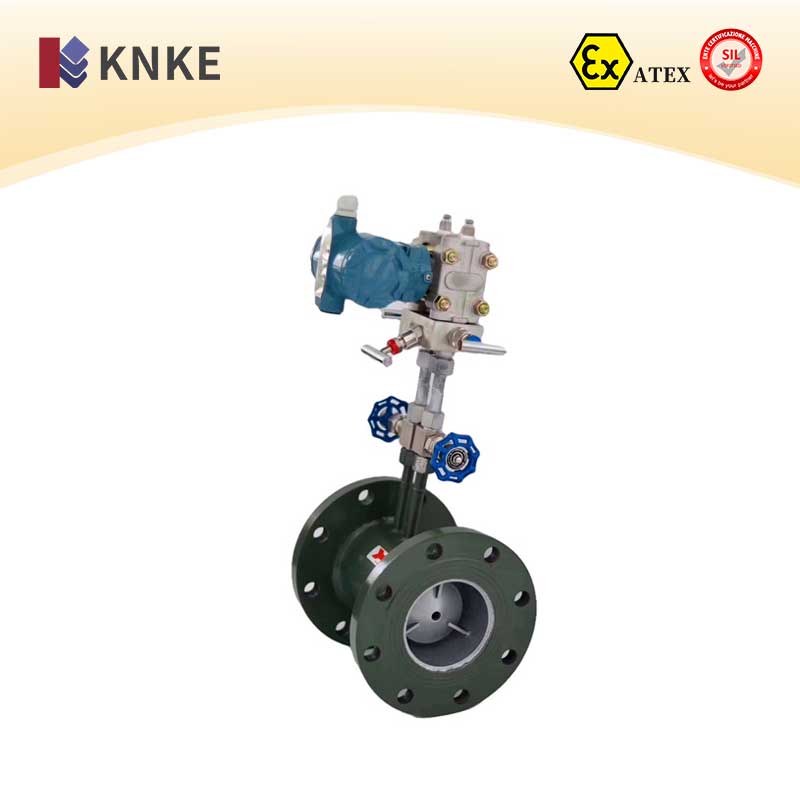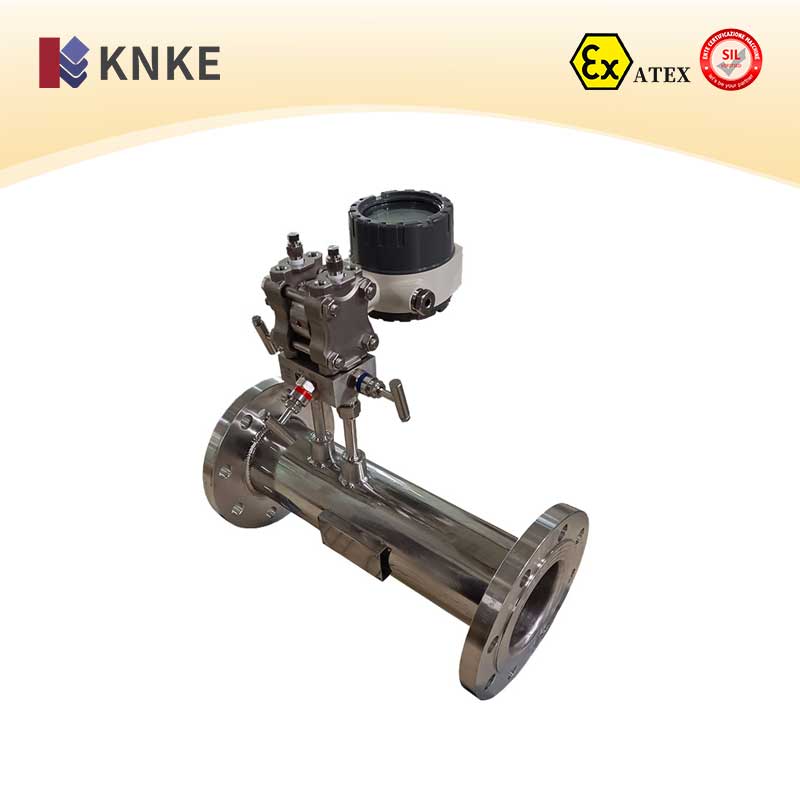Description
Overview of KNKE V-Conical Flow meter
The KNKE V-Conical Flow meter is a differential pressure flow measurement device that utilizes a V-shaped cone suspended in the center of the pipeline to create a constriction. The fluid flows around the cone, optimizing the flow pattern. This design offers numerous advantages compared to traditional flow measurement devices, such as flow straightening and improved accuracy. Based on Bernoulli’s theorem, the V-cone Flow Meter calculates the flow rate by measuring the differential pressure caused by the change in velocity and pressure as the fluid passes through the cone. The flow is directly proportional to the square root of the differential pressure, ensuring precise flow measurements.
Technical Parameters
| Parameter | Value |
| Accuracy | ±1.0% |
| Repeatability | ±0.1% |
| Flow Range Ratio | 10:01 |
| Straight Pipe Length Requirement | Upstream 1–2, Downstream 1–3D |
| Measurement Pipe Diameter | 15mm–3000mm |
| Temperature | -50℃–800℃ |
| Pressure | PN0.6, PN1.0, PN1.6, PN2.5, PN4.0, PN6.4, PN10, PN16, PN40 |
| Pressure Drop | Similar to Venturi tube |
| Stability | Long-term stable flow area |
| No Dead Zones | Ensured by the cone purge design |
Applications of KNKE V-Conical Flow Meter
- Liquids: Oil, fuel oil, emulsified oil, clean water, wastewater, salt and alkali solutions, oil-containing and sand-containing water
- Gases: Coal gas (coke oven gas, blast furnace gas, producer gas, etc.), natural gas (including gas with more than 5% moisture), hydrocarbon gases, hydrogen, helium, argon, oxygen, nitrogen, air (including moist and dusty air), flue gas
- Steam: Saturated steam, superheated steam
Design Features
- Flow field straightener design to optimize velocity profile distribution
- Self-cleaning function ensured by cone purge design
- High accuracy and repeatability
- No stringent straight pipe requirements
- Suitable for measuring dirty or scaling-prone media
- Can measure gas-liquid two-phase flow
- Low pressure drop
- V-cone edges are less prone to wear, maintaining long-term measurement accuracy
- Excellent accuracy (≤0.5%) and repeatability (≤0.1%)
- Wide flow range ratio (10:1 to 15:1)
- Self-rectification function, requiring minimal straight pipe length (1-3D upstream, 0-1D downstream)
- Self-cleaning ability for dirty and scaling media, ideal for applications like blast furnace gas
- Self-protection function, with no wear on key components, ensuring long-term stability
- Resistant to high temperatures, pressures, corrosion, and vibration
- Suitable for a wide range of fluids (liquid, gas, steam) and pipe sizes (DN15–DN3000)
- The design ensures no blockage or contamination of fluids, ideal for dirty media flow measurement
- No moving parts, ensuring high stability over time
- Conical design reduces wear and ensures the long-term stability of key dimensions
- Ideal for applications where space is limited, such as in heat exchange stations, without the need for long straight pipe lengths
Advantages of KNKE V-Conical Flow Meter
- High precision, stability, wide flow range ratio, and versatility in measuring various media
- Suitable for liquids, gases, and steam flow measurement
- Can handle fluid conditions up to 800℃ and pressures up to 10.5 MPa
- Optional special materials for higher temperature and pressure tolerances
- Capable of measuring low Reynolds numbers (down to 8000)
- Full-scale differential pressure signal ranges from less than 0.1 kPa to several kPa
- The fluid’s boundary layer effect protects the cone from wear, ensuring long-term accuracy
- Ideal for challenging applications like blast furnace gas, where self-cleaning and self-protection are essential
Application Areas
- Gases: Coke oven gas, blast furnace gas, city gas, natural gas (with over 5% moisture), hydrocarbon gases, hydrogen, helium, argon, oxygen, nitrogen, corrosive gases, air (including moist and dusty air), flue gases
- Steam: Saturated steam, superheated steam
- Liquids: Crude oil, fuel oil, emulsified oils, diesel, hydraulic oil, clean water, sewage, acid and alkali solutions, methanol, ethylene glycol, etc.
- Special Fluids: Oil + HC gas + sand, gasified water (e.g., H2O + N2 + air, H2O + CO2, etc.)

